Coffee Field Spacing
Climate change may require some rethinking about tree spacing configurations to facilitate the use of new tools and even system change. Especially to provide adequate mulching material to protect coffee tree roots and surrounding soil through long hot dry seasons, wider between-row spacings should be considered when replanting.
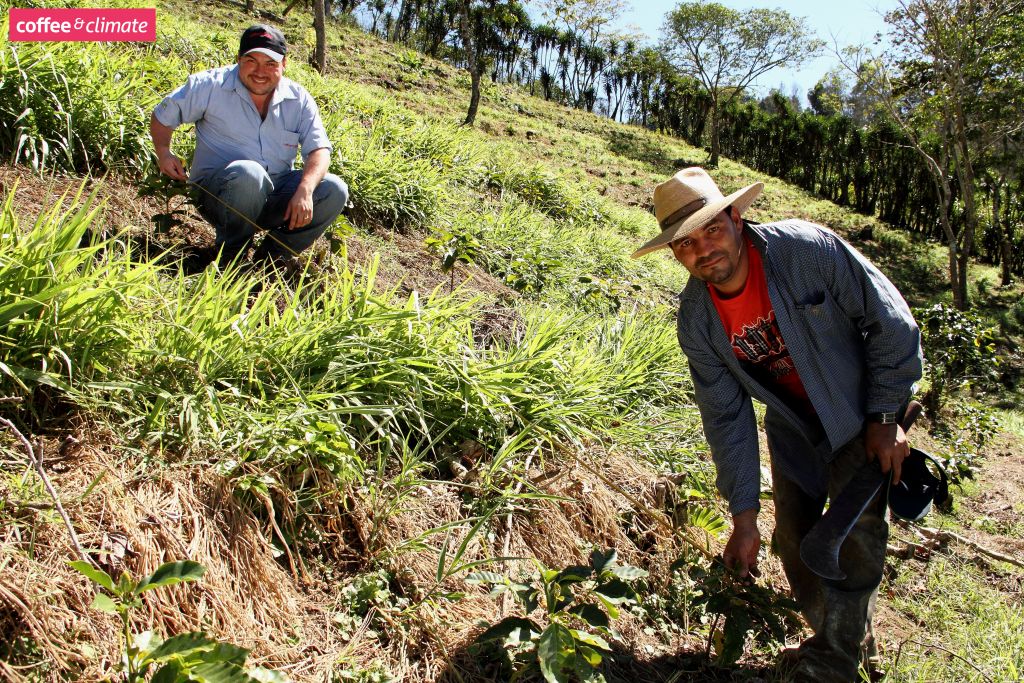
Concept
Replanting is a costly exercise and if young trees (< 2 years) are exposed to a long dry season (especially during an El Niño event) tree mortality can be very high. For the first two to three years it is therefore very important to protect soils from extremes until the trees grow to a size where roots are more established and self-shading limits high soil temperatures. However, it is often challenging to provide a thick layer of mulch that lasts through a long intense dry season. Some farmers bring in material from outside the coffee plot but this can be costly. Where planting density is around 5000/ha or higher, the inter-row spaces to grow mulching material become limited and more difficult to manage. One solution is to increase the between-row width to 2.5 m, and if necessary reduce within-row spacing down to 0.8 m (to give 5000 trees/ha). The 2.5 m strip provides a broad swath where cover crops like Brachiaria and Cajanus and Crotalaria Juncea can be grown and then cut to cover the ground adjacent to the rows of coffee.
Drawbacks
- Replanting is necessary.
- Any new planting configuration will require some changes in agronomic practices.
Costs
- Since spacing changes require replanting, establishment costs are high.
Recommended Activities
- Initially only small areas (not larger than 0.2 ha) should be replanted to judge the utility of this new configuration under local conditions.
Further Activities
Increasing row width may also help to:
- Improve aeration of plots during wet periods.
- Allow more light in to the lower coffee branches, especially on sloping land.
- Allow easier experimentation with shade trees (temporary or permanent).
- Allow more space to try out mixed cropping, especially in marginal zones where coffee will inevitably cease to be grown in the future.
- Have something to add to this tool description? Leave a comment!
- Interested in applying this tool? Look for pictures, case studies and info sheets below for step-by-step instructions to get you started.
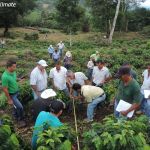
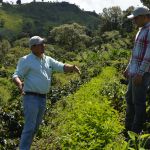
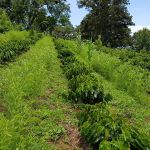
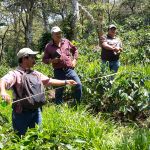
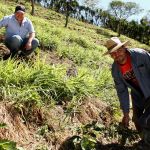
Just to learn more ,what could be the correct spacing of shade trees in a coffee garden
Hi Mugwanya
In low altitudes it should be 8 meters x 8 meters, in high altitudes it could be 12 x 12. Basically, in low altitudes, you need more as you have higher temperatures.
Hi my name is Nery small coffe farmer in guatemala. Would you guys know how or where can I get some brachiaria grass seed in Guatemala. Any info would be appreciated thank you
Hi Nery, you can find it at Semiagro, please make sure it is the type of Brachiaria we are suggesting.
I’m very impress to see coffee farmers being assisted in other pat of the world.
I would be very pleased to get assistance to revive coffee in Papua New Guinea.
Hi Bill, thanks for your encouragement.
Thank you for clear explanations… i am from indonesia, where we are suggested to plant coffee with density of 2000 trees. For dwarf and 1600 for taller varieties. My question is, can this density of 5000 trees be used for taller coffee varieties like typica,bourbon, hdt etc. And what kind of pruning method should be applied?